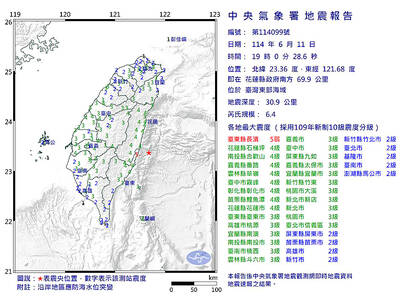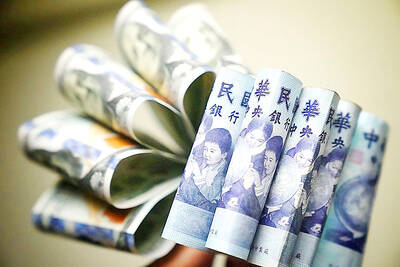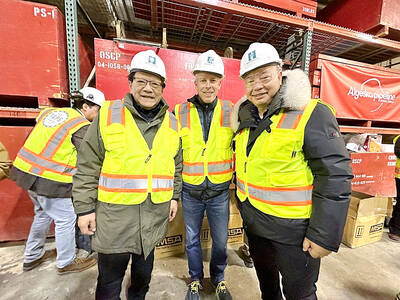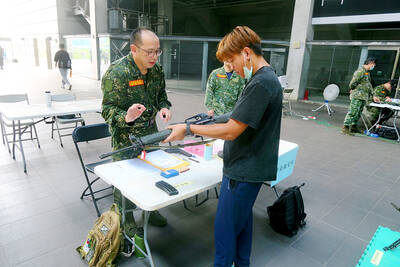Citing his own experiences at a press conference to launch his autobiography in Taipei yesterday, exiled Tibetan Buddhist master Arjia Rinpoche accused the Chinese government of trying to control and manipulate religion.
Born in 1950 and confirmed as the reincarnation of the seventh Arjia Rinpoche in 1952, Arjia Rinpoche — who is an ethnic Mongolian — was sent to Kumbum Monastery in Qinghai Province, thinking that he would lead a life as a simple monk.
However, Chinese occupation of Tibet and the Chinese government’s attempt to wipe out religion changed the course of his life.
“One day [in 1958], all monks at Kumbum Monastery were called to attend a meeting. At the meeting venue, we found ourselves surrounded by Chinese officials, police and military personnel carrying guns,” Arjia Rinpoche said. “The officials announced that they wanted to break feudalistic superstitions, and all of a sudden some militiamen came out and arrested more than 500 monks.”
Although Arjia Rinpoche escaped arrest, he was forced to attend Chinese school and work in labor camps for the following 16 years.
As a result of the Chinese government’s “religious reform” and the Cultural Revolution — which lasted from 1966 to 1977 — the number of monks at Kumbum Monastery decreased from more than 4,000 to just 50, with many monasteries destroyed and monks sent to labor camps.
In his family alone, as many as 29 people were sent to labor camps, Arjia Rinpoche said.
Despite the Chinese government’s attempt to destroy Buddhist culture, Tibetans kept the culture alive even in the labor camps.
“Older monks always told us to continue our studies of Buddhism, we did not have books — because they were banned — but the older monks had memorized all the Buddha’s teachings, and they secretly passed the knowledge to us,” Arjia Rinpoche said.
Following the political rise of Chinese Communist Party member Deng Xiaoping (鄧小平) after the Cultural Revolution, the Chinese government’s policy on religion loosened a little bit, allowing Arjia Rinpoche and other monks to return to monasteries.
However, the selection of the 11th Panchen Lama made him decide to go into exile.
Following the death of the 10th Panchen Lama in 1989, an 11th Panchen Lama was quickly found and confirmed by the Dalai Lama.
However, the Chinese government refused to recognize the 11th Panchen Lama and took the 6-year-old boy away, insisting on finding its own 11th Panchen Lama.
Arjia Rinpoche — along with many other respected Tibetan Buddhist masters — was forced to attend a ceremony to draw the name of the 11th Panchen Lama from a golden urn held by the Chinese government in 1990.
He said that he did not want to attend the political-religious show, especially when drawing lots from a golden urn was not originally a Tibetan tradition, but a measure imposed by the Chinese Emperor Qianlong.
Although the name-drawing event proceeded smoothly, Arjia Rinpoche was shocked when he was told by the Chinese Bureau of Religious Affairs director Ye Xiaowen (葉小文) that the ivory lot with the name of the child that the Chinese government wanted to become the 11th Panchen Lama was made longer so that the lot drawer would know which to pick.
“I was shocked when I heard this, because it was disrespectful to our religion and to my beliefs. They also wanted me to be the teacher of the new Panchen Lama,” Arjia Rinpoche said. “I simply couldn’t do it, so I decided to go into exile in 1998.”
Also attending the press conference, Democratic Progressive Party Legislator Hsiao Bi-khim (蕭美琴) — who is a long-term supporter of the Tibetan cause — said Taiwanese should learn from the lesson, while urging Taiwanese to render their support for the Tibetans and the Chinese in their struggle for freedom.

A magnitude 6.4 earthquake struck off the coast of Hualien County in eastern Taiwan at 7pm yesterday, the Central Weather Administration (CWA) said. The epicenter of the temblor was at sea, about 69.9km south of Hualien County Hall, at a depth of 30.9km, it said. There were no immediate reports of damage resulting from the quake. The earthquake’s intensity, which gauges the actual effect of a temblor, was highest in Taitung County’s Changbin Township (長濱), where it measured 5 on Taiwan’s seven-tier intensity scale. The quake also measured an intensity of 4 in Hualien, Nantou, Chiayi, Yunlin, Changhua and Miaoli counties, as well as

Credit departments of farmers’ and fishers’ associations blocked a total of more than NT$180 million (US$6.01 million) from being lost to scams last year, National Police Agency (NPA) data showed. The Agricultural Finance Agency (AFA) said last week that staff of farmers’ and fishers’ associations’ credit departments are required to implement fraud prevention measures when they serve clients at the counter. They would ask clients about personal financial management activities whenever they suspect there might be a fraud situation, and would immediately report the incident to local authorities, which would send police officers to the site to help, it said. NPA data showed

ENERGY RESILIENCE: Although Alaska is open for investments, Taiwan is sourcing its gas from the Middle East, and the sea routes carry risks, Ho Cheng-hui said US government officials’ high-profile reception of a Taiwanese representative at the Alaska Sustainable Energy Conference indicated the emergence of an Indo-Pacific energy resilience alliance, an academic said. Presidential Office Secretary-General Pan Men-an (潘孟安) attended the conference in Alaska on Thursday last week at the invitation of the US government. Pan visited oil and gas facilities with senior US officials, including US Secretary of the Interior Doug Burgum, US Secretary of Energy Chris Wright, Alaska Governor Mike Dunleavy and US Senator Daniel Sullivan. Pan attending the conference on behalf of President William Lai (賴清德) shows a significant elevation in diplomatic representation,

The Taipei City Reserve Command yesterday initiated its first-ever 14-day recall of some of the city’s civilian service reservists, who are to undergo additional training on top of refresher courses. The command said that it rented sites in Neihu District (內湖), including the Taipei Tennis Center, for the duration of the camp to optimize tactical positioning and accommodate the size of the battalion of reservists. A battalion is made up of four companies of more than 200 reservists each, it said. Aside from shooting drills at a range in New Taipei City’s Linkou District (林口), the remainder of the training would be at